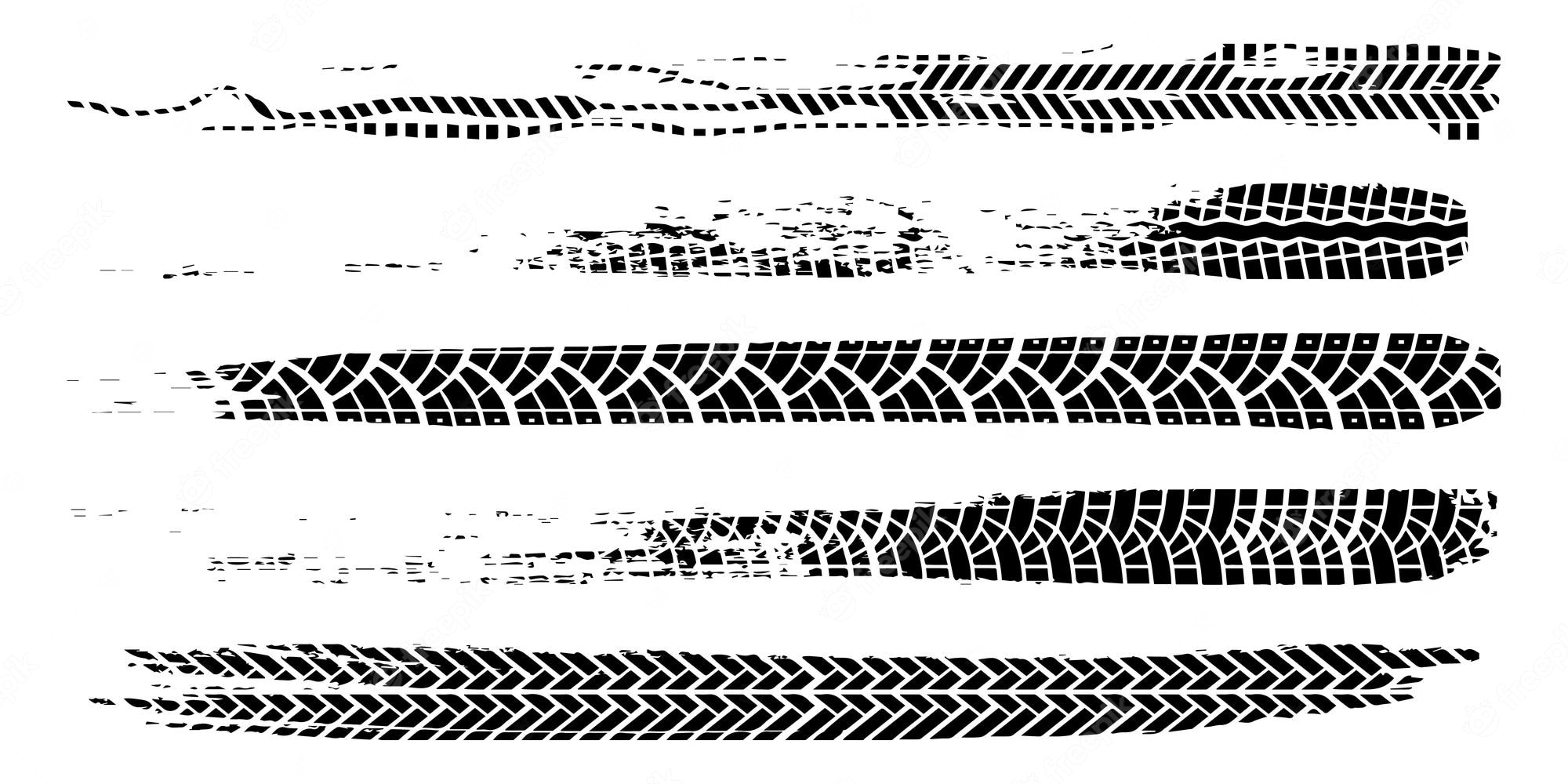

FAQs
How Do Skid Marks Form
Published: July 31, 2023
Learn how skid marks form and discover the answers to your general questions about this common road phenomenon.
(Many of the links in this article redirect to a specific reviewed product. Your purchase of these products through affiliate links helps to generate commission for Under-tec.com, at no extra cost. Learn more)
Table of Contents
Introduction
Tire skid marks are a significant and telling indication of an incident or accident. They play a crucial role in accident reconstruction, offering valuable insights into the events leading up to a collision. Whether it’s at the scene of a car crash or a forensic investigation, skid marks provide investigators with valuable information about vehicle speed, driver behavior, and road conditions.
Skid marks are the visible traces left on the road surface when a vehicle’s tires lose traction and slide across the pavement. They are the result of locked or spinning wheels during braking or acceleration, with the friction between the tires and the road creating these distinct marks.
Understanding how skid marks form is essential, as it allows accident investigators and experts to determine crucial factors such as vehicle speed, acceleration, or deceleration rates. It also helps assess the effectiveness of braking systems, the condition of the road surface, and the presence of other contributing factors.
In this article, we will delve into the science behind skid mark formation, the influential factors, and the role they play in accident investigations. By examining the intricate relationship between tire properties, road conditions, and environmental factors, we can better comprehend the valuable insights these marks offer in reconstructing the sequence of events leading to an accident.
What are Skid Marks?
Skid marks are the visible trails or streaks left on the road surface by vehicle tires when they lose traction and slide across the pavement. These marks are typically darker in color than the road surface itself and can vary in length and width, depending on several factors. Skid marks provide valuable evidence in accident reconstruction and help determine factors such as vehicle speed, braking distance, and the sequence of events leading up to a collision.
There are two main types of skid marks: acceleration skid marks and braking skid marks. Acceleration skid marks occur when a vehicle’s tires spin as the driver attempts to accelerate too quickly, overwhelming the traction between the tires and the road surface. These skid marks are typically shorter in length and lighter in color.
On the other hand, braking skid marks form when a driver applies the brakes forcefully, causing the wheels to lock up and slide along the road surface. In this case, the friction between the locked wheels and the pavement creates darker and longer skid marks. The length of the skid marks can provide insights into the vehicle’s initial speed and the effectiveness of the brakes.
Skid marks can vary in width depending on factors such as tire size, tire pressure, and vehicle weight. Wider skid marks generally indicate more forceful braking or acceleration. Besides their visual appearance, experts can also analyze the depth and texture of skid marks to gain further information. Deeper and more pronounced marks may indicate a heavier vehicle or more severe braking or acceleration.
Furthermore, skid marks can help determine the point of impact in a collision. By analyzing the angle, direction, and placement of the skid marks, accident reconstruction experts can estimate the position of the vehicles before impact, aiding in the determination of fault and the sequence of events leading up to the accident.
Factors Influencing Skid Mark Formation
Skid mark formation is influenced by various factors that can affect the traction between the tires and the road surface. Understanding these factors is crucial for accident investigators and experts to accurately analyze and interpret skid marks. Let’s explore some of the key factors that influence skid mark formation:
- Speed: The speed at which a vehicle is traveling before braking or acceleration greatly influences the length and intensity of skid marks. Higher speeds typically result in longer skid marks since more time and distance are required for the tires to lose traction and slide.
- Tire Condition: The condition of the tires, including tread depth and tire pressure, plays a significant role in skid mark formation. Worn-out or underinflated tires reduce the amount of friction between the tire and the road, affecting the length and appearance of the skid marks.
- Road Surface: The texture and condition of the road surface can have a substantial impact on skid mark formation. Dry, clean roads offer better traction, resulting in shorter skid marks. However, wet or icy surfaces significantly reduce traction, leading to longer and more pronounced skid marks.
- Brake Efficiency: The effectiveness of the brakes directly affects the formation of skid marks during braking. Well-maintained and fully functional brake systems allow for optimal performance, resulting in shorter skid marks. Faulty or worn-out brakes may cause longer skid marks due to reduced stopping power.
- Slope and Gradient: The slope and gradient of the road also impact skid mark formation. Uphill or downhill slopes can affect the weight distribution and tire grip, potentially resulting in variations in skid mark appearance and length.
- Vehicle Weight: The weight of the vehicle can influence the depth and intensity of skid marks. Heavier vehicles tend to leave deeper and more pronounced marks compared to lighter vehicles.
It is important to consider these factors when analyzing skid marks as part of accident investigations. By taking into account the various influences on skid mark formation, investigators can better understand the events leading to an accident and accurately determine the contributing factors.
Tire Properties and Skid Marks
Tire properties play a crucial role in skid mark formation. The design, composition, and condition of the tires can significantly affect the traction between the tires and the road surface, thus influencing the appearance and characteristics of skid marks. Let’s explore some tire properties that contribute to skid mark formation:
- Tire Tread: The tread pattern on the surface of the tire is designed to provide traction and grip on the road. A deeper and more aggressive tread pattern tends to generate better traction, resulting in shorter skid marks. On the other hand, worn-out or bald tires with shallow tread depth reduce the friction between the tires and the road, leading to longer and more pronounced skid marks.
- Tire Material: The composition of the tire material can affect its friction coefficient with the road. Different tire compounds have different levels of grip, wear resistance, and heat generation. More grip-oriented tire compounds tend to generate shorter skid marks, while less grippy compounds will produce longer skid marks as a result of reduced traction.
- Tire Pressure: Proper inflation of tires is essential for optimal traction. Underinflated tires decrease the contact patch between the tire and the road, reducing friction and resulting in longer skid marks. Overinflated tires, on the other hand, may have reduced contact with the road, leading to uneven skid mark patterns.
- Tire Type: Different tire types, such as summer tires, winter tires, or all-season tires, have varying levels of grip and traction on different road surfaces. Winter tires, for example, have deeper tread patterns and softer compounds designed to enhance grip on snow and ice. These tire types may generate different skid mark characteristics depending on the road conditions.
It is important for accident investigators and experts to consider tire properties when analyzing skid marks. By examining the tread depth, tire condition, and type of tires, they can gain valuable insights into the traction capabilities of the vehicle and the influence of the tires on skid mark formation. This information allows for a more accurate reconstruction of the events leading up to an accident and helps drivers, manufacturers, and authorities make informed decisions to improve road safety.
Skid Marks and Braking Distance
Skid marks are directly related to the braking distance of a vehicle, which is the distance it takes for a vehicle to come to a complete stop after the brakes are applied. Understanding the relationship between skid marks and braking distance is essential for accident reconstruction and assessing the effectiveness of braking systems. Let’s delve into this relationship:
When a driver applies the brakes forcefully, the wheels may lock up, causing the tires to slide along the road surface. This results in the formation of braking skid marks. The length of these skid marks is directly proportional to the distance traveled by the vehicle while the wheels are locked.
The braking distance depends on several factors, including the vehicle’s initial speed, the condition of the tires and the road surface, and the effectiveness of the braking system. A higher initial speed or poor road conditions generally result in longer braking distances and, consequently, longer skid marks.
The coefficient of friction between the tires and the road surface during braking also plays a crucial role in determining the braking distance and the length of the skid marks. A higher coefficient of friction allows for better traction, resulting in a shorter braking distance and shorter skid marks. Therefore, road conditions such as wet or icy surfaces, which reduce the coefficient of friction, can lead to longer braking distances and skid marks.
By analyzing the length of the skid marks left behind by a vehicle during braking, investigators can estimate the vehicle’s initial speed. This information is vital for accident reconstruction, allowing experts to assess whether excessive speed was a contributing factor to the incident.
It is important to note that while skid marks can provide valuable information about the braking distance, other factors, such as perception-reaction time, vehicle weight, and road gradient, also influence the overall stopping distance of a vehicle. These factors should be considered in conjunction with skid mark analysis to gain a comprehensive understanding of the events leading to an accident.
In summary, skid marks can serve as a valuable indicator of a vehicle’s braking distance during an incident. By analyzing the length of skid marks, experts can estimate the initial speed of the vehicle and determine the effectiveness of the braking system. This information aids in accident reconstruction and helps identify potential contributing factors to the incident.
Environmental Factors Affecting Skid Marks
Skid marks are not solely influenced by the vehicle and the tires, but also by various environmental factors. These factors can significantly impact the traction between the tires and the road surface, ultimately affecting the appearance and characteristics of skid marks. Let’s explore some of the key environmental factors that can affect skid marks:
- Road Surface Condition: The condition of the road surface plays a critical role in skid mark formation. Dry and clean road surfaces typically provide better traction, resulting in shorter skid marks. In contrast, wet, icy, or oily road surfaces reduce traction, leading to longer and more pronounced skid marks. Accumulated debris, such as gravel or sand, can also affect skid mark formation.
- Weather Conditions: Weather conditions, including rain, snow, ice, or fog, can have a significant impact on skid marks. Poor weather conditions can reduce tire grip and traction, resulting in longer skid marks. It is important to consider the weather conditions at the time of the incident when analyzing skid marks to accurately interpret their meaning.
- Temperature: Temperature can affect tire grip and influence skid mark formation. In colder temperatures, tire compounds may harden, reducing traction and potentially leading to longer skid marks. Additionally, extreme heat can cause tire degradation, affecting skid mark characteristics.
- Road Gradient: The slope or gradient of the road can impact skid mark appearance and length. Uphill or downhill slopes can affect the weight distribution and the grip between the tires and the road, resulting in variations in skid marks.
- Lighting Conditions: The lighting conditions at the time of the incident can affect how skid marks are visible and documented. Poor lighting, such as during the nighttime or in low visibility conditions, may impact the accuracy of skid mark analysis.
These environmental factors can significantly influence skid marks and must be taken into consideration during accident investigations. By understanding how these factors impact skid mark formation, accident investigators and experts can accurately interpret the skid marks and gain insights into the events leading up to an accident.
Analyzing Skid Marks in Accident Investigation
Skid marks play a crucial role in accident investigations, providing valuable evidence and insights into the events leading up to a collision. Analyzing skid marks requires a careful examination of various factors to accurately reconstruct the sequence of events. Let’s explore how skid marks are analyzed in accident investigations:
Length and Appearance: The length of skid marks can provide an estimation of the vehicle’s initial speed before braking or acceleration. Longer skid marks generally indicate higher speeds, while shorter skid marks suggest lower initial speeds. Additionally, the appearance of the skid marks, including their width, depth, and texture, can help determine factors such as tire condition, tire type, and the presence of other contributing factors.
Point of Impact: Analyzing the angle, direction, and placement of skid marks can help determine the point of impact in a collision. By examining the skid marks left by both vehicles involved, investigators can estimate the position of the vehicles before impact, aiding in the determination of fault and the sequence of events leading up to the accident.
Skid Mark Patterns: The patterns of skid marks can provide valuable insights into driver behavior and vehicle dynamics. For example, parallel skid marks may indicate a controlled stop, while erratic or swerving skid marks may suggest a driver trying to avoid an obstacle. By carefully analyzing the patterns and trajectories of skid marks, investigators can reconstruct the actions and decision-making process of the drivers involved.
Road Conditions: Skid marks can provide information about the condition of the road surface at the time of the incident. By examining the appearance of the skid marks and considering environmental factors such as weather conditions, road gradients, and road surface conditions, investigators can assess how these factors may have contributed to the accident.
Braking Distances: Skid marks can help estimate the braking distance of a vehicle. By measuring the length of the skid marks and other factors such as the initial speed and road conditions, investigators can determine the effectiveness of the braking system and assess whether excessive speed or other factors impacted the driver’s ability to stop in time.
During skid mark analysis, it is crucial for investigators to consider multiple factors and piece together different pieces of evidence to create a comprehensive reconstruction of the events. This analysis provides valuable information for establishing fault, making legal decisions, and identifying potential areas for improving road safety.
Conclusion
Skid marks serve as valuable indicators in accident investigations, providing critical information about vehicle speed, braking distances, driver behavior, and road conditions. Through careful analysis and consideration of various factors, skid marks can help reconstruct the sequence of events leading up to a collision.
Understanding the formation and characteristics of skid marks is essential for accident investigators and experts. Factors such as tire properties, road surface conditions, environmental influences, and braking distances play a significant role in determining the appearance and length of skid marks.
By analyzing the length and appearance of skid marks, investigators can estimate the vehicle’s initial speed and assess the effectiveness of braking systems. Skid mark patterns can provide insights into driver behavior and vehicle dynamics, while examining the point of impact can aid in determining fault and the sequence of events leading to the accident. Additionally, considering road conditions and environmental factors allows investigators to understand how external elements may have contributed to the incident.
Skid mark analysis is a vital part of accident reconstruction, providing crucial evidence for legal proceedings, insurance claims, and improving road safety. It requires a meticulous examination of various factors and collaboration between accident investigators, experts, and other professionals.
In conclusion, skid marks are far more than just visible streaks on the road surface. They hold crucial information that helps unravel the mysteries surrounding vehicle accidents. By harnessing the insights provided by skid mark analysis, we can continue to improve our understanding of accidents, enhance road safety measures, and ultimately strive for a safer future on the roads.










